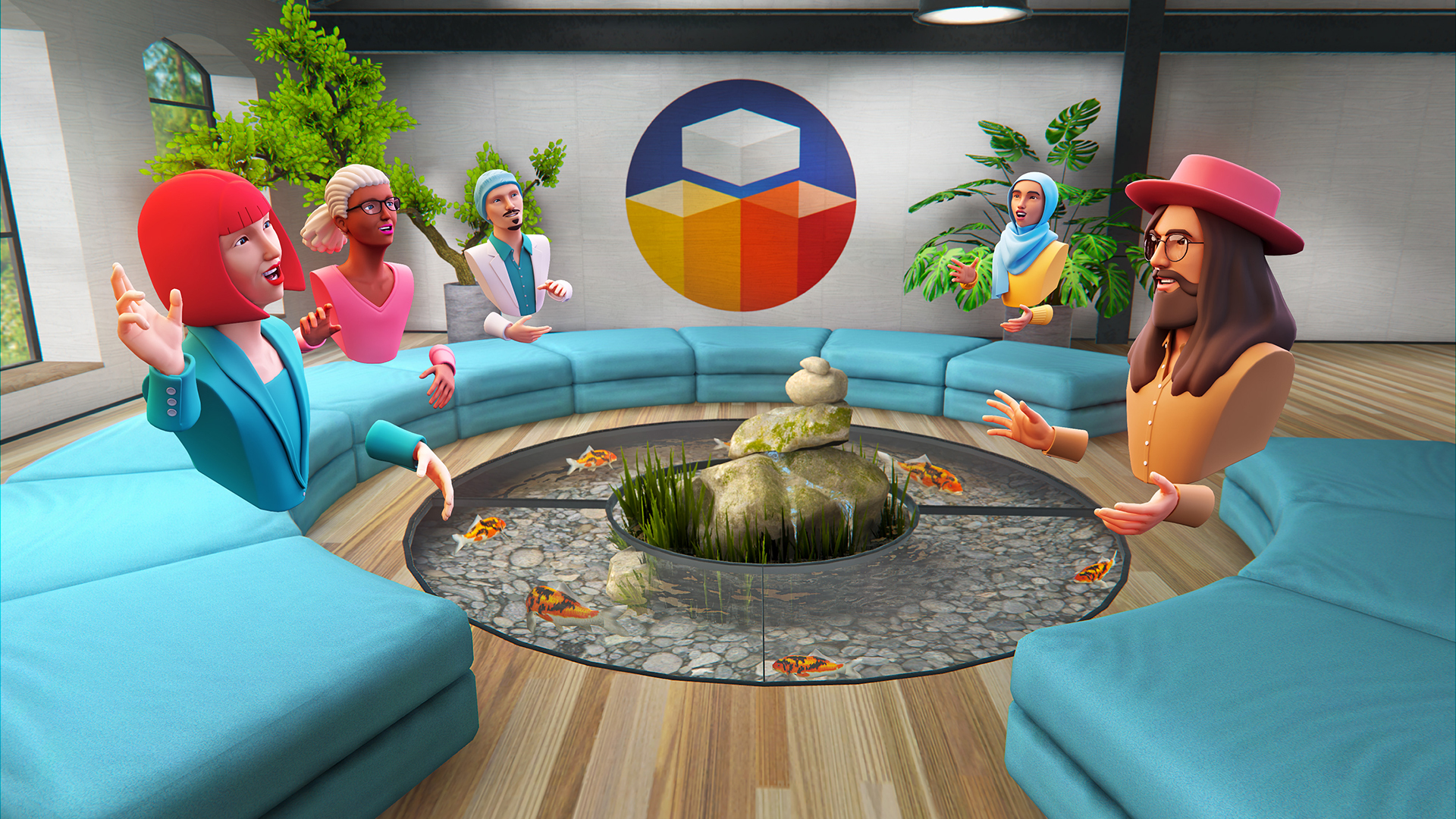Every day technologists, developers and business executives peer into their crystal balls to predict how the metaverse will take shape. As a network of immersive 3D virtual worlds, the metaverse has the potential to transform the way we socialize, game and shop, as well as learn, create and work. But amid all the hype and noise, it’s easy to lose sight of the practical applications and value it offers people and businesses today.
In this post, I take a moment to touch on some of the pragmatic use cases and benefits we’re already seeing in the workplace —from collaborating with far-flung colleagues to creating new ways to captivate customers.
Better collaboration
One of the most promising areas is virtual collaboration. This sees teams come together in 3D workspaces that resemble real offices, interacting with one another face-to-face using digital avatars. Working in the same 3D space, even if virtual, has been found to improve the quality of collaboration and boost team cohesion relative to video calls, making it attractive to businesses with dispersed workforces.
The workspaces don’t have to be your standard conference rooms. Daily scrums and workshops can take place in custom spaces, complete with in-meeting tools and their own dedicated spatial sound design to boost immersion. As you’re not faced with the space and cost constraints of the physical world, why not have your team meet in a garden, on an island or in a mountain lodge?
Germany’s T-Systems, for example, holds design thinking workshops in a range of virtual locations, bringing their remote teams together for high-quality collaboration without the need to travel.
Captivating product showcases
Many organizations have built custom spaces for use not only by their staff but as venues for customer engagement. Product marketers enjoy greater freedom when designing showcases in the metaverse. Scenarios that would be large scale, too expensive or otherwise dangerous to create in the real world can be easily created in virtual form.
IQM Quantum Computers has built a custom virtual reality experience where visitors can discover what happens inside a quantum computer. It’s a great example of how to use the metaverse’s immersive qualities to turn complex subject matter into an engaging story and experience.
Immersive learning
The immersive qualities of the metaverse also come into play in formal education and training. Well-constructed learning experiences in VR can help an otherwise passive learner become an active learner more likely to later recall what they learned.
VR-based learning is also useful for training of staff working with potentially hazardous materials or production processes. Konecranes, a world-leading group of Lifting Businesses, has developed a VR-based training exercise in Glue to support training on a synthetic rope hoist. Metaverse learning experiences like these have modest hardware and software requirements, are always available and can be efficiently scaled for learners around the world.
Marketing and social simulations
Finally, if you’re a marketer or product manager, the metaverse is a powerful tool for gauging how customers interact with your new products and experiences. Rather than ask people what they think, you can simulate situations and scenarios in VR and see how people actually behave and use your product. Brands might even test a new store concept virtually before launching a bricks-and-mortar version in the real world.
Conclusion
These are just four examples of use cases possible in Glue today. In practice, the list is long, spanning virtual meetings and events to design reviews, workshops and even the onboarding of new team members.
With companies continuing to explore the ways they can build and run their businesses in the metaverse, the possibilities will continue to grow.
Ready to start your metaverse journey?
Book a demo to start experimenting with virtual collaboration in your business.




